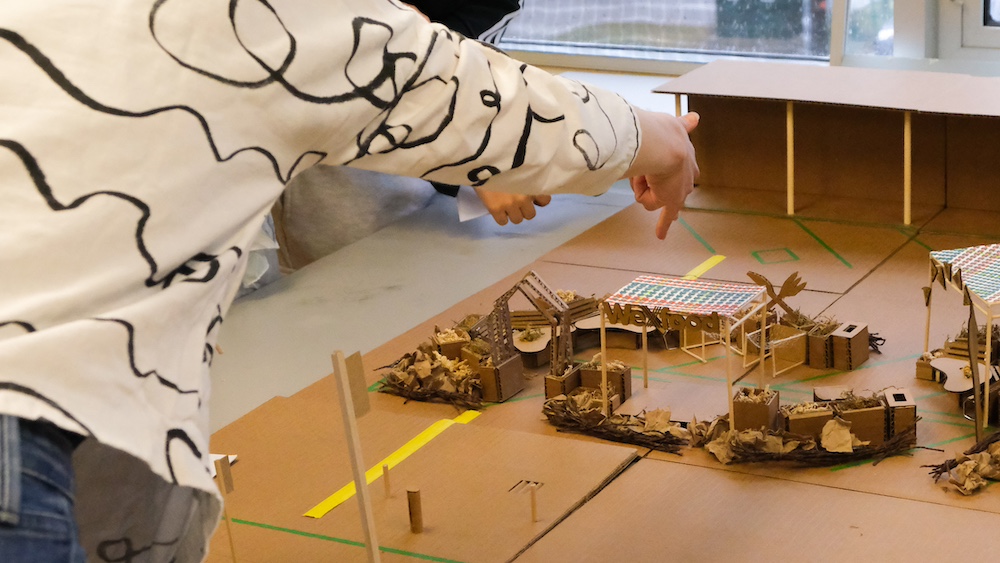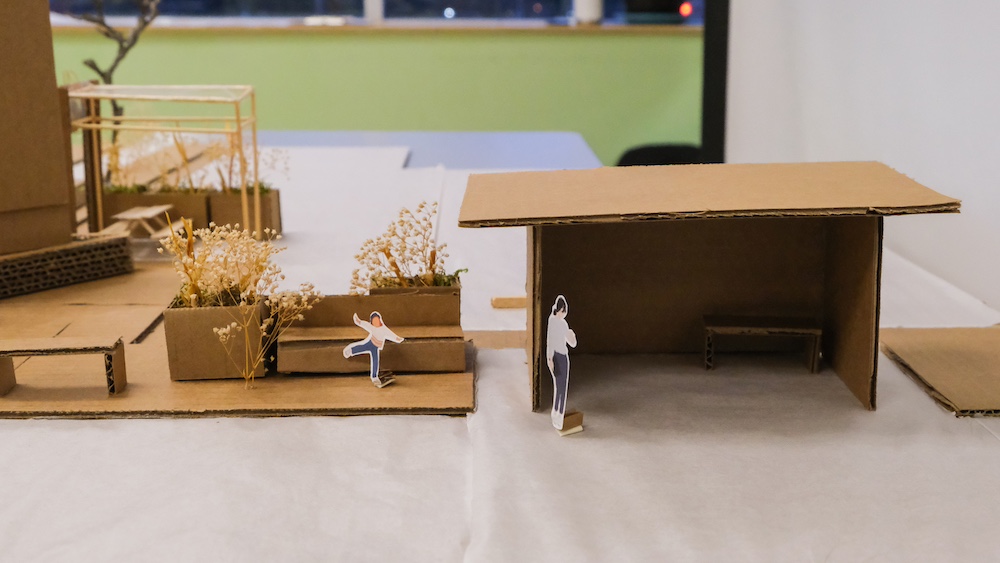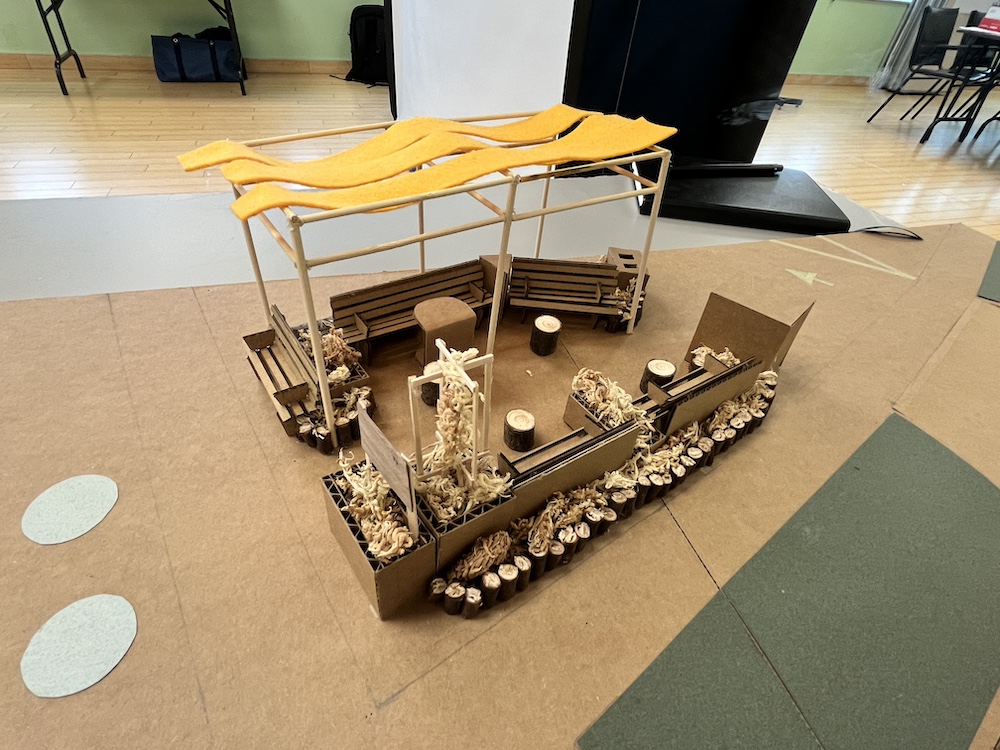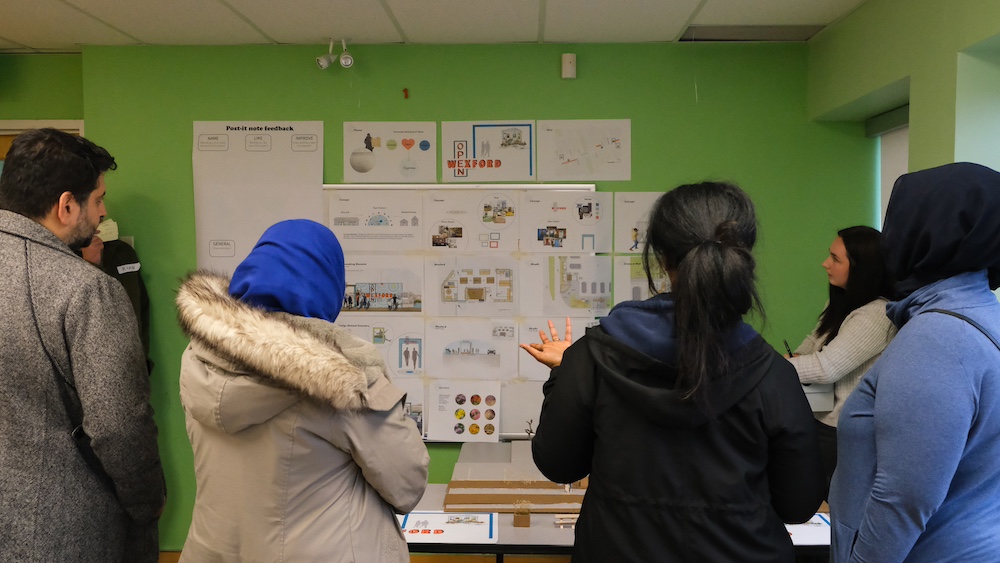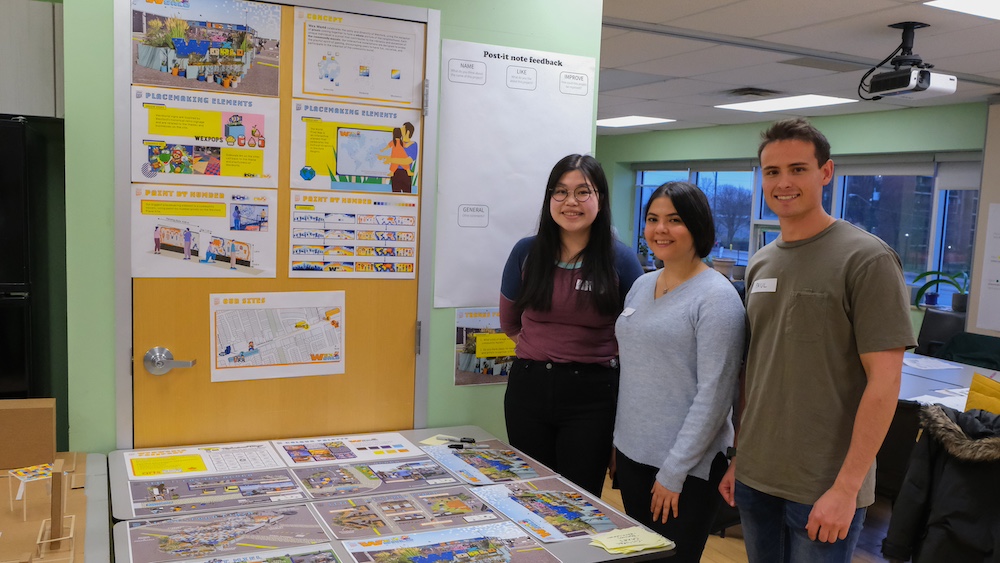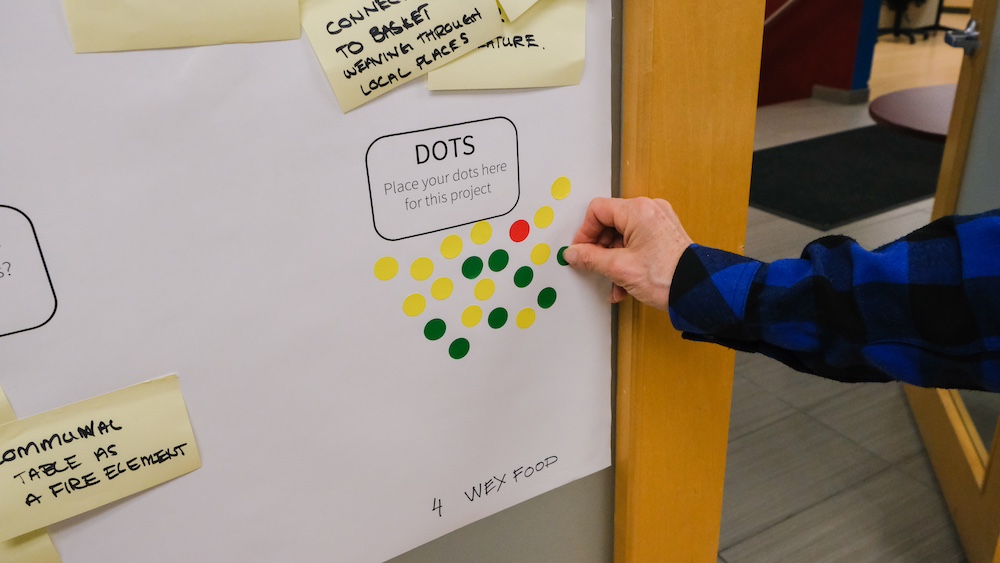2023: Wexford Blooms
Student corner: Reflections on participating in plazaPOPS at the University of Guelph
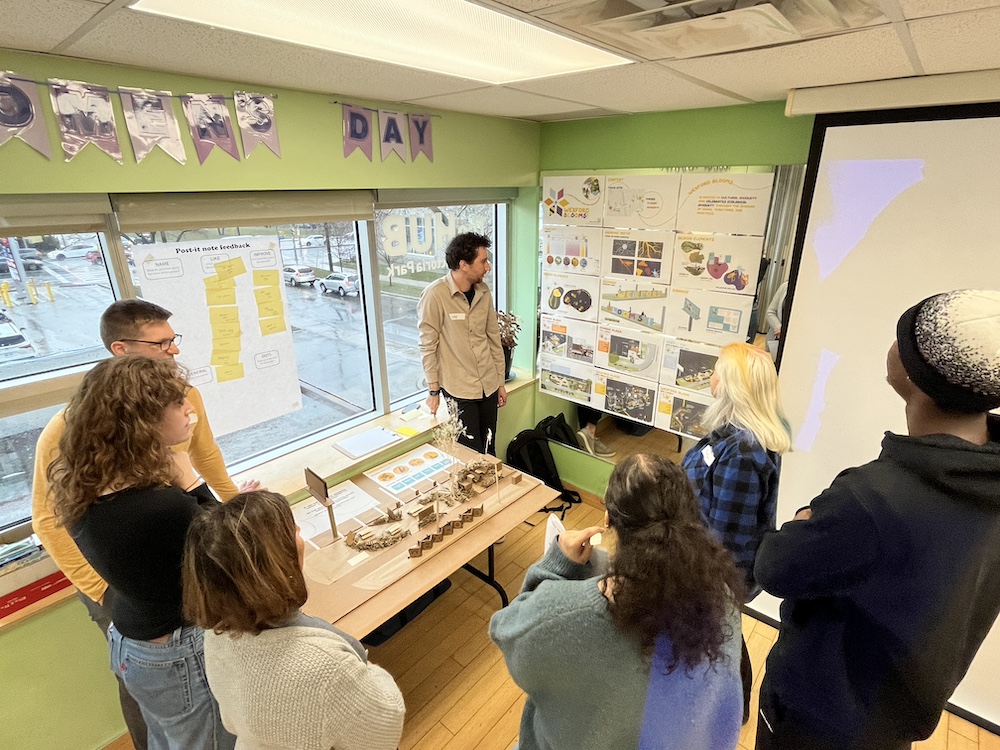
By Ryan De Jong
Link to article
Upon entering the MLA program at the University of Guelph, we were given a mountain of software and information to absorb. Through this process, our lives and learning experiences as students can become somewhat insular and confined to our school’s design studio. But last winter, our professor Brendan Stewart brought us out of our studio caves for the final project in our Community Design class. In this project, we were tasked with developing designs for this year’s plazaPOPS installations along Lawrence Avenue in Wexford, Scarborough. The design process for this project was memorable, as our class was involved in two community design workshops, hosted at the Working Women Community Centre in Scarborough. In these workshops, we engaged with a diverse and lively group of approximately 30 community members to generate and refine design concepts. This was a new experience for us, which deserves some reflection.
Prior to the workshops, our class visited the five parking lot sites along Lawrence Ave to conduct a site analysis and get a feel for the neighbourhood. We were joined by Daniel Rotsztain and Tupac Espinoza of ERA Architects, and Brennan Luchsinger, the general manager of contracting for Building Up. These individuals, along with Brendan Stewart, Rui Felix of ERA, and Jennifer Wan (who ERA hired from our class), later worked together to realize the designs our class and community developed after the semester.
Through the process of these two workshops, our class gained valuable experiences and lessons in public engagement. There were some common questions and hurdles that came about before and during the workshops, such as:
• What jargon words should we avoid and replace? (i.e.‘programming’ with ‘activity’).
• How do we engage and get thoughts from quieter community members?
• How much technical detail should we include in drawings?
Along with these questions, the first big challenge we found was time constraints, as we generally had five-minute conversations with the community groups. Longer discussions would have been helpful to get more detailed and flushed out ideas, but the workshops were already two hours, and a longer time commitment may have dissuaded some from attending. These constraints forced us to be strategic and mindful of how we communicated and engaged with the groups; we needed to be concise and avoid using jargon. Moreover, the workshops cemented the importance of having clear concepts and drawings. In this regard, we found community members tended to gravitate towards models and perspectives, rather than technical drawings, to understand the designs.
The conversations we had were valuable as they gave us deeper information and understanding about the sites, surrounding businesses, and community. They were also key in helping us generate design ideas and themes.
But the workshop process itself and how it enabled us to form connections with the community felt just as valuable. This was echoed in our class readings, where Emily Talen wrote in Do-It-Yourself Urbanism: a history (2015), the act of doing has benefits in itself. She says the act of doing, “can bring a diverse group of people together, united in a common, active purpose.” Karl Linn also noted in Building Commons and Community (2007) that, “The process is more important than the product”. I expect that when the community members visited the sites in the summer, they likely felt a sense of pride and deeper connection to their neighbourhood knowing they played a role in helping design the installations.
As a class, we found the workshops to be an exciting and rewarding experience. Classmates noted that, despite challenges such as our visions not always aligning with the community members, the workshops inspired greater enthusiasm for the project and they felt they were providing an act of service to the community which was gratifying. And, being the final studio class of our program, the experience felt like a bridge into our future professional careers. As students, we often forget the minute details and material learned in class—I admit I’ve forgotten much of the plant ID knowledge and facts I learned last semester. But, reflecting on the courses I’ve taken and material I’ve been exposed to, it is experiences such these community design workshops I remember the most. I will always remember precariously loading our big models into cars with my classmates, the stories I heard, and the faces I met in the workshops. I will remember chatting with Abdi, who drew a camel during the concept development exercise which involved drawing a Wexford flag, as it reminded him of home back in Somalia.
As students, the field trips and people we meet along the way leave an impression on us; we are products of our environment and experiences. These out-of-studio experiences enrich our education experience—broadening our perspectives and improving our communication skills, making us well-rounded people and designers. Moreover, they set a precedent for how to approach projects in the future. As a class, the excitement of the workshops and the importance and value of facilitating community involvement in the design process is now etched in our minds. And while this process requires a lot of coordination and planning, it is worth it. As musician Brian Eno put it: “Although great new ideas are usually articulated by individuals, they are nearly always generated by communities.”
In the final lecture at the University of Guelph this year, BLA (06) graduate Brad Smith, OALA, of Seferian Design Group emphasized the importance of lifelong learning. Our MLA class has completed our foundation courses in our program and is now focusing on thesis research, but it is clear our learning is not over: it has just begun.
plazaPOPS design concept models. IMAGES/ Videsh Brijpaul
plazaPOPS design concept models. IMAGES/ Videsh Brijpaul
plazaPOPS design concept models. IMAGES/ Videsh Brijpaul
Workshop participants look over the concepts. IMAGE/ Videsh Brijpaul
plazaPOPS community workshop participants. IMAGE/ Videsh Brijpaul
Workshop participants put dots by design concepts they like best. IMAGE/ Videsh Brijpaul
Looking at design options for plazaPOPS. IMAGE/ Videsh Brijpaul
Brendan Stewart shows the plazaPOPS timeline. IMAGE/ Videsh Brijpaul
